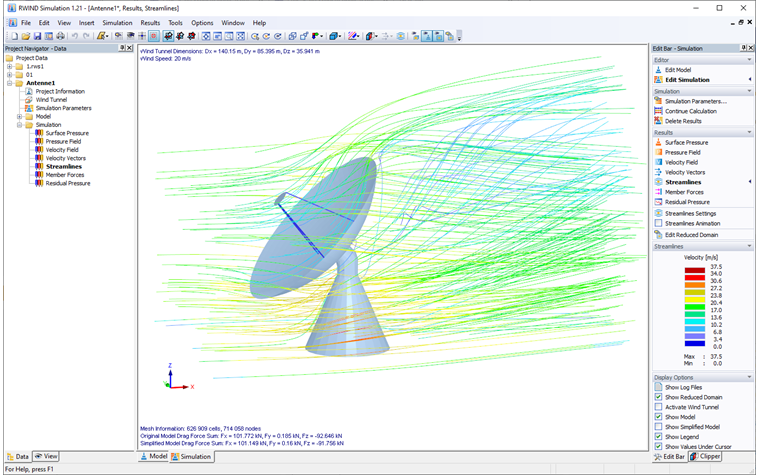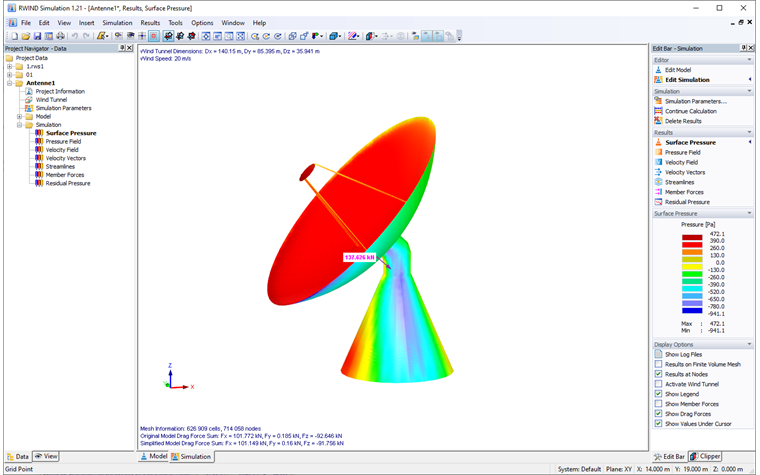RWIND Simulation is a program for numerical simulations of wind flow. It is a tool for describing a problem of wind flow around an object, consisting of a system of partial differential equations with the output of an approximate solution on the basis of the finite volume method. Similarly to a simplified model in a real wind tunnel, such a mathematical model provides information about the wind velocity field and pressures acting on the surfaces of the wind flow object.
The standards describing wind effects on buildings and structural components (for example, EN 1991‑1‑4, ASCE/SEI 7, and others) are based on different principles. The rules and standards specify the corresponding instructions for determining wind loads for specific situations and application cases. These formulas are undoubtedly correct for the assigned situations, and the resulting values have been confirmed in practice.
However, these guidelines do not describe all situations that occur in the real world of engineers. Here, infinitely different model shapes in the wind flow are processed, whereby each shape has its own high-grade influence on the resulting surface pressures caused by the wind load. However, for all model shapes not mentioned in the respective directives, the equivalent load from wind effects remains unclear.
RWIND Simulation can help here as an auxiliary tool for determining the resulting forces from wind action. However, even with the use of RWIND Simulation, all requirements of the valid engineering standards must be met. The technology used in the simulation program may also provide further useful insights for object shapes that are sufficiently regulated in the standard.


